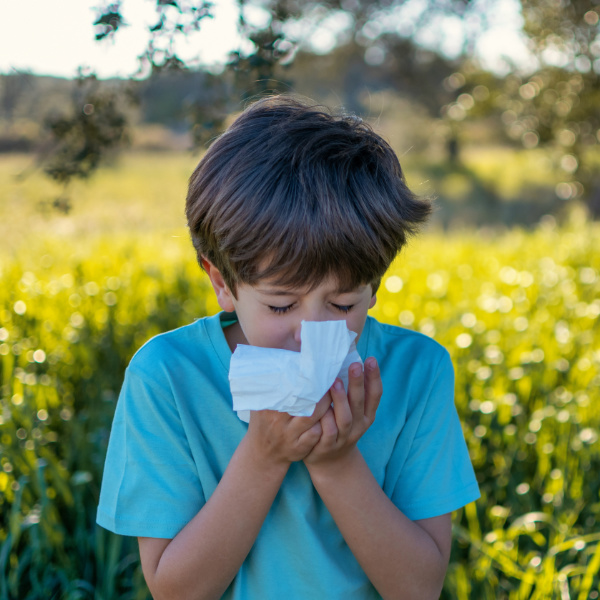Respiratory Allergies in Children
Respiratory allergies are one of the most common allergic conditions in children. They occur when your child’s immune system reacts to a normally harmless substance in the air — like pollen, dust mites, pet dander, or mould spores — as if it were a threat. This immune response leads to inflammation in the airways, nose, and lungs, causing a variety of symptoms that can impact your child’s daily life, sleep, and overall well-being.
What Are Respiratory Allergies?
Respiratory allergies include:
- Allergic rhinitis (hay fever): inflammation of the nose and sinuses
- Allergic asthma: inflammation and tightening of the lower airways
- Allergic conjunctivitis: itchy, watery, red eyes due to airborne allergens
These conditions are triggered when a child inhales allergens, which activate an immune response involving IgE antibodies and the release of histamine, a chemical that causes inflammation, mucus production, and other allergy symptoms.
Common Symptoms

Symptoms of respiratory allergies can range from mild to severe and may include:
- Sneezing
- Itchy, runny, or blocked nose
- Itchy throat or roof of mouth
- Red, watery, or itchy eyes
- Dry cough or persistent throat clearing
- Wheezing, shortness of breath, or chest tightness (if asthma is present)
- Poor sleep and daytime tiredness
Some children experience year-round symptoms (perennial allergic rhinitis), while others may only have symptoms during specific seasons (seasonal allergic rhinitis or hay fever).
Common Triggers
Respiratory allergies can be caused by a range of airborne allergens, including:
| Allergen | Source |
|---|---|
| Pollen | Trees, grasses, and weeds (seasonal) |
| Dust mites | Found in bedding, carpets, soft toys |
| Pet dander | Skin flakes, saliva, and hair from cats, dogs, and other animals |
| Mould spores | Damp areas, bathrooms, basements, outdoor leaf piles |
| Pollution & smoke | Tobacco smoke, wood fires, car exhaust (irritants that worsen allergy symptoms) |
When to Suspect Respiratory Allergies
Consider respiratory allergies if your child:
- Has ongoing nasal or eye symptoms lasting more than two weeks
- Coughs regularly, especially at night or after outdoor play
- Has seasonal breathing problems or wheezing not linked to infection
- Has asthma or eczema (many children with these conditions also have allergies)
- Seems worse when exposed to pets, dust, or pollen
Diagnosis
A detailed history and examination by a doctor can help identify whether your child has respiratory allergies. Allergy testing, such as skin prick testing or blood tests, may be recommended to pinpoint specific allergens.
Treatment Options
Management focuses on:
- Avoiding known triggers where possible (e.g. using allergen-proof bedding, keeping windows closed during pollen season)
- Medications, such as:
- Antihistamines
- Intranasal steroid sprays
- Eye drops
- Leukotriene receptor antagonists (e.g. montelukast)
- Inhalers for asthma
- Allergy immunotherapy (in selected children): this may be offered as tablets or injections to reduce the body’s reaction to allergens over time.
Supporting Your Child
Respiratory allergies can affect your child’s sleep, school performance, and quality of life. With the right treatment and support, symptoms can usually be well managed.
Located in London | Infants to young adults seen
Request a referral or book an appointment with Professor Gupta today.
